Installation Guide for SmartPlayer on Novastar TB 30 Device
Description of the Situation
The SmartPlayer platform supports interaction with various devices running different operating systems. Some devices do not require additional manipulation to install SmartPlayer, but there are certain devices that do not launch SmartPlayer when following the standard installation procedure. One such non-standard device is the Novastar TB 30.
SmartPlayer Support
| Support Start | Recommended Version |
|---|---|
| ver. 1.73.0 | ver. 1.73.0 |
Required Software for Setup
To install the SmartPlayer software on the Novastar TB 30 player, two programs are needed:
- Viplex Express
SmartPlayer Firmware Installation
Firmware list for devices:
Failure to update the firmware on the device will prevent proper content playback!
Installing SmartPlayer Firmware on a NovoStar Device
In the Viplex application, the user needs to go to the "Control" section.
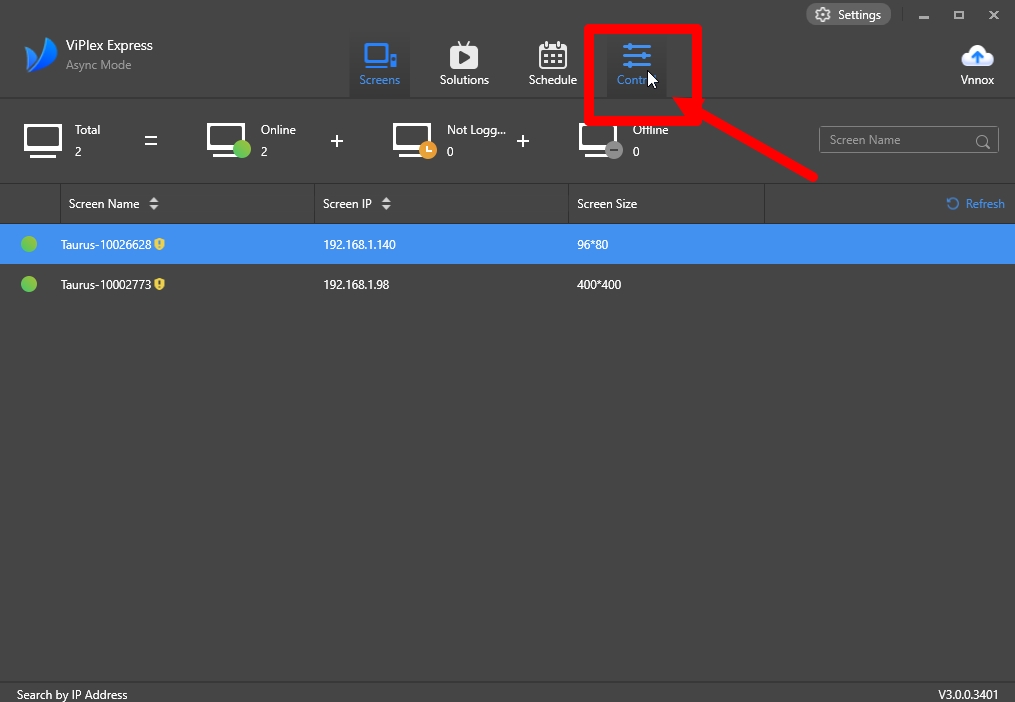
Inside the "Control" section, the user should find the "Player upgrade" category.
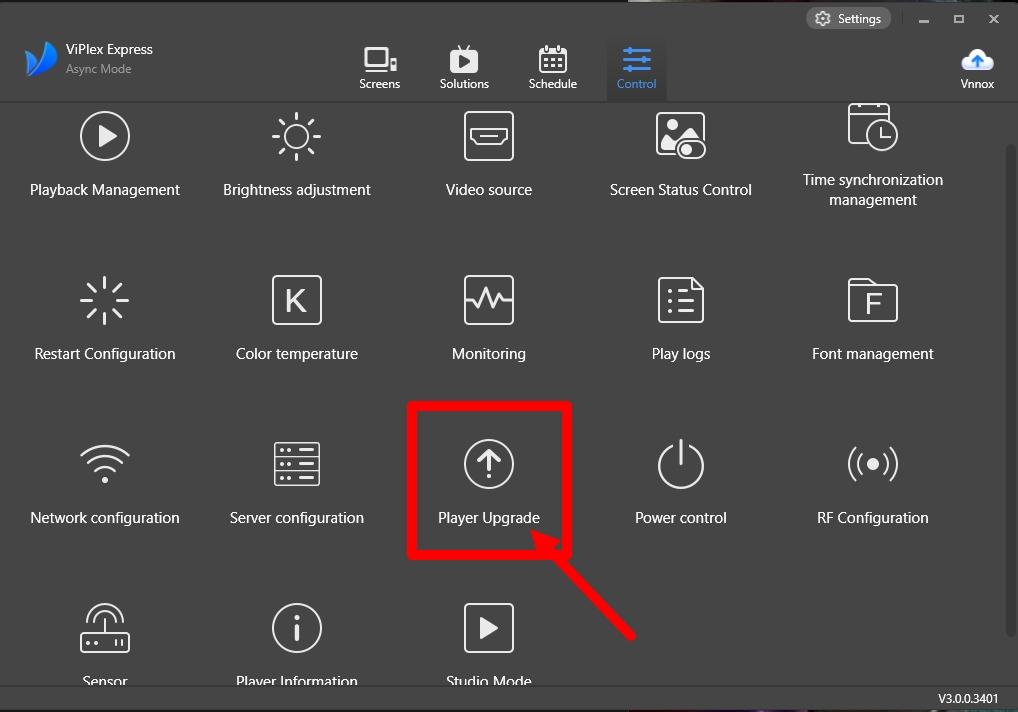
After entering the "Player upgrade" category, the user should select "Local Upgrade" in the "Upgrade Method" field by clicking the dot next to the option. Next, the user should click the three dots next to "Local Upgrade" and specify the path to the downloaded firmware in "nuzip" format. Once the firmware is located, the application will display the path to the storage where the firmware is saved. The user should then select the necessary device using the checkbox at the bottom left of the application and click the "Upgrade" button to start updating the firmware on the selected device.
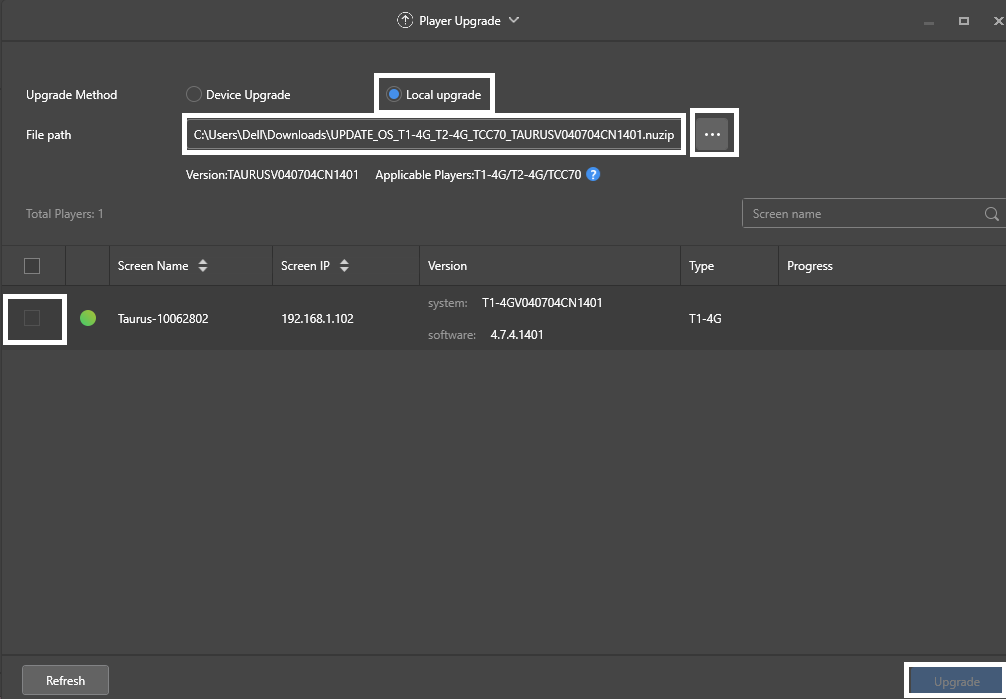
Before the firmware update begins, a window with the notification "Close the window after installation" will appear. The user needs to click "OK". Once the download is complete, the firmware will be installed and used by the device.
Steps to Follow
- Install the Viplex Express application and begin configuring the device.
- Activate SmartPlayer on the Novastar TB 30 device using Viplex Express.
- Configure network parameters and time settings using Viplex Express.
- Launch and connect via ADB.
A more detailed and expanded description of each step will be provided below.
Step 1: Installing the Viplex Express Application and Configuring the Device
First, the user needs to install the Viplex Express program.
The next step is to launch the Viplex Express application on the device using the shortcut.
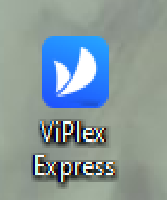
Once the application is opened, the user will see the application's main menu.
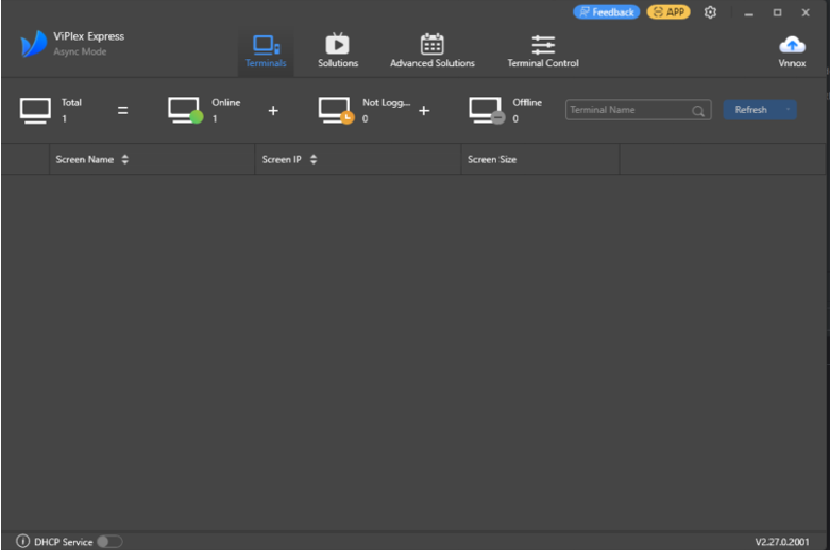
To begin using the application, the user needs to set "Async mode".
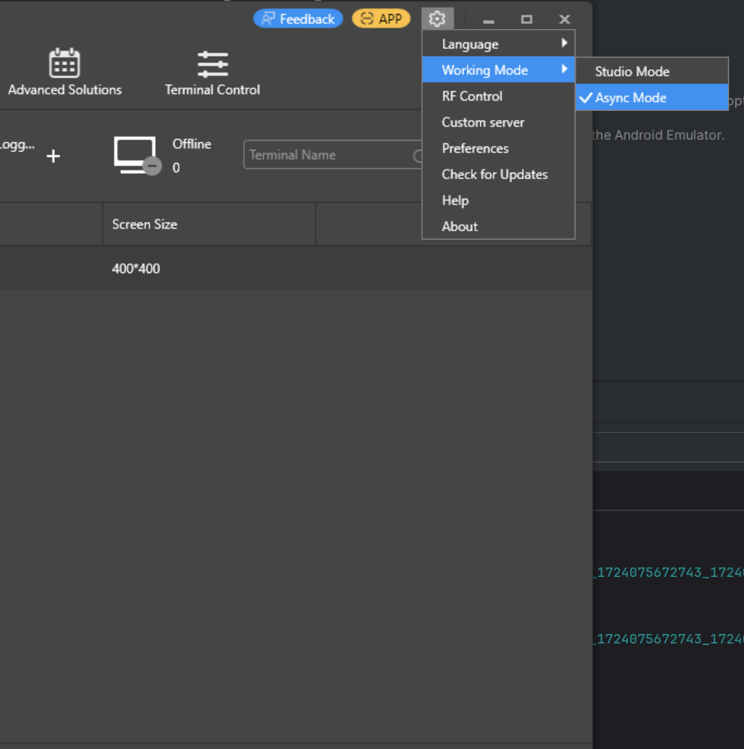
Next, connect the device (Novostar TB 30) to the local network. The device should appear in the list of detected equipment.
After clicking the "Refresh" button, the user needs to select the player that will be configured.
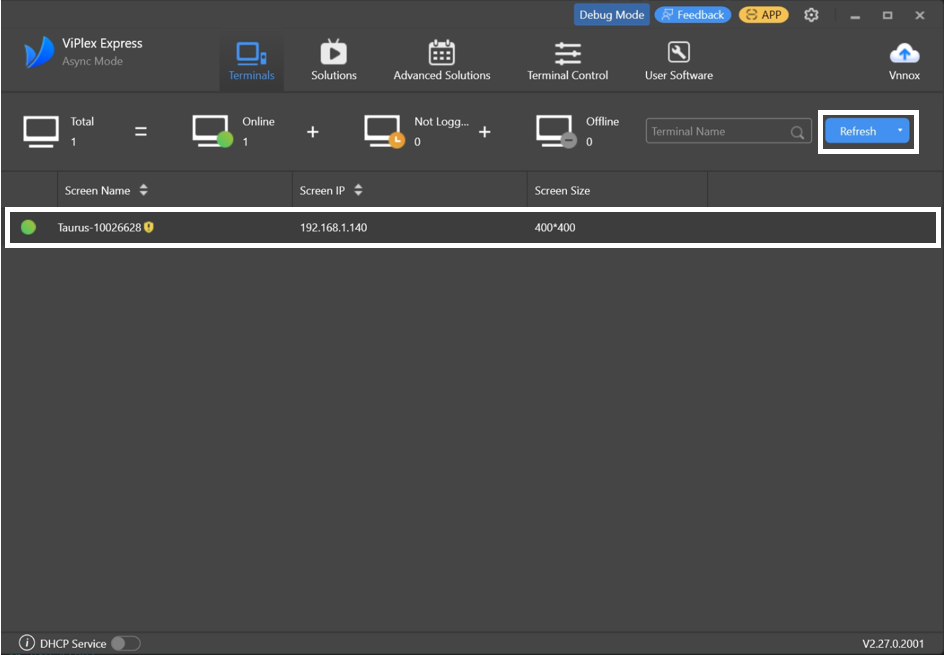
To connect the device, use the details provided on the device. Once successfully connected, the device (Novostar TB 30) will appear in the list of available devices.
To connect to the device, the user needs to click the "Connect" button. The application may prompt for a password, which by default is "123456".
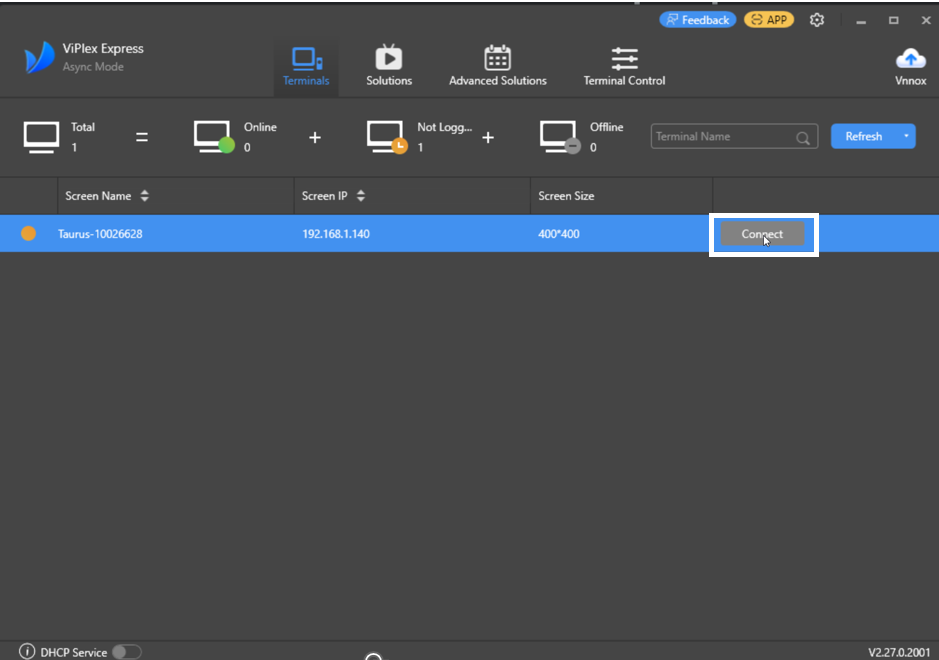
After the device is successfully connected in the application, a green indicator will light up next to the device name. This indicator signifies that the connection was successful.
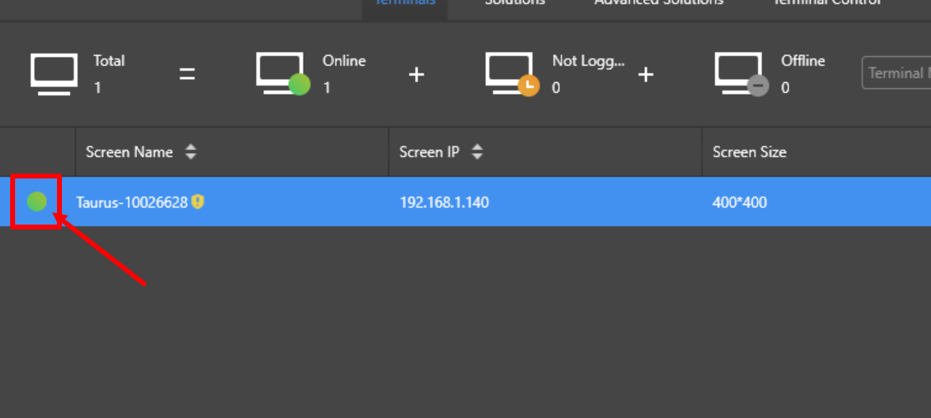
To install the application on the device, the user needs to display an additional menu item. This is done by typing "NovaSoft" on the device using the keyboard. After entering this phrase, an additional menu item will appear.
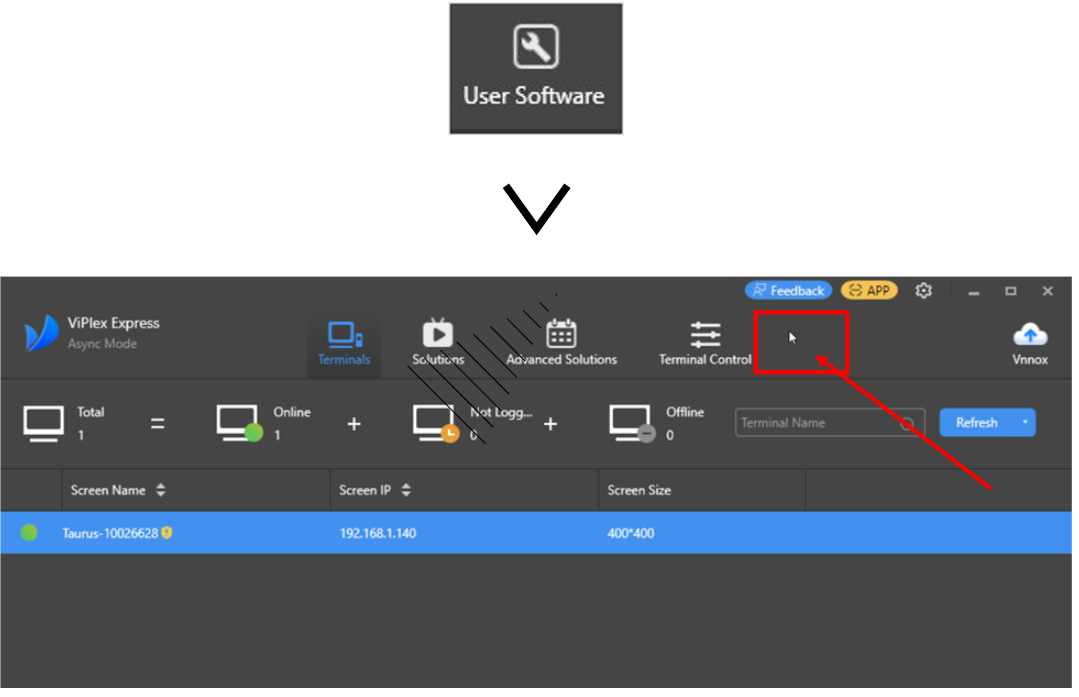
The user needs to navigate to the new menu section, which will open a new menu page.
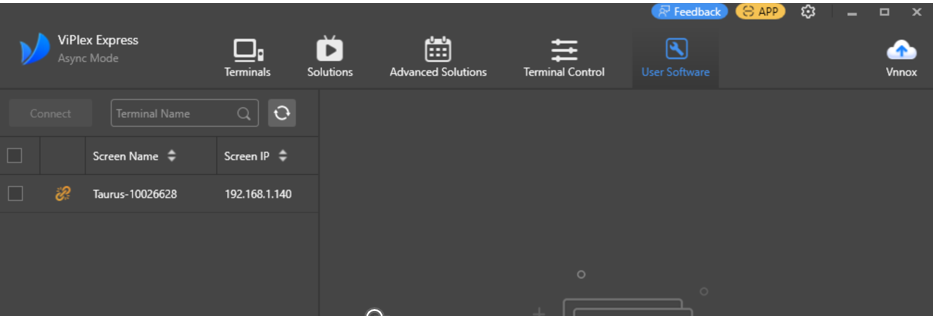
The next step is to select the desired player and click the "Connect" button. If necessary, enter the password "123456".
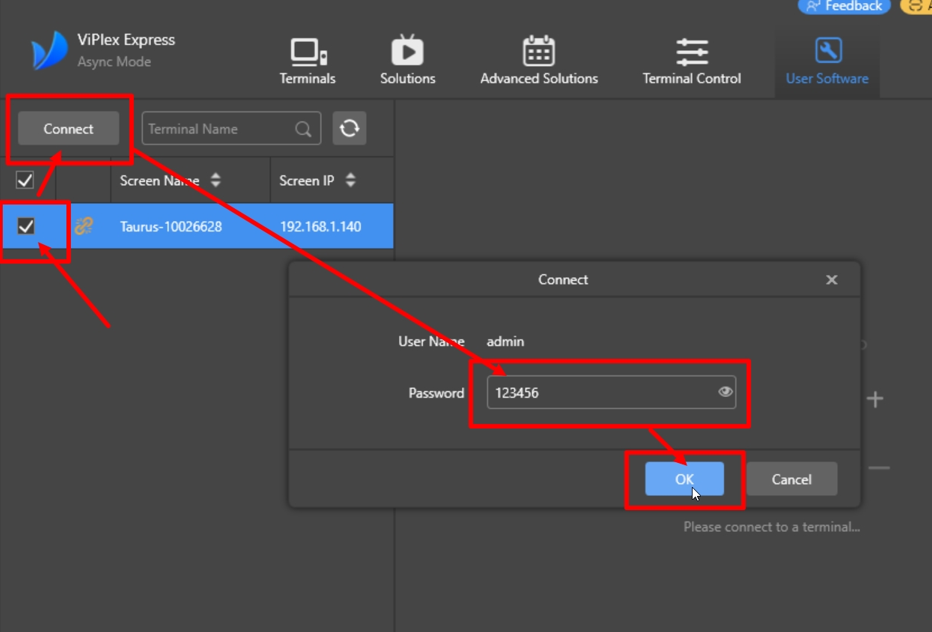
Then the user needs to click on the player. A new page with a menu should appear after clicking.
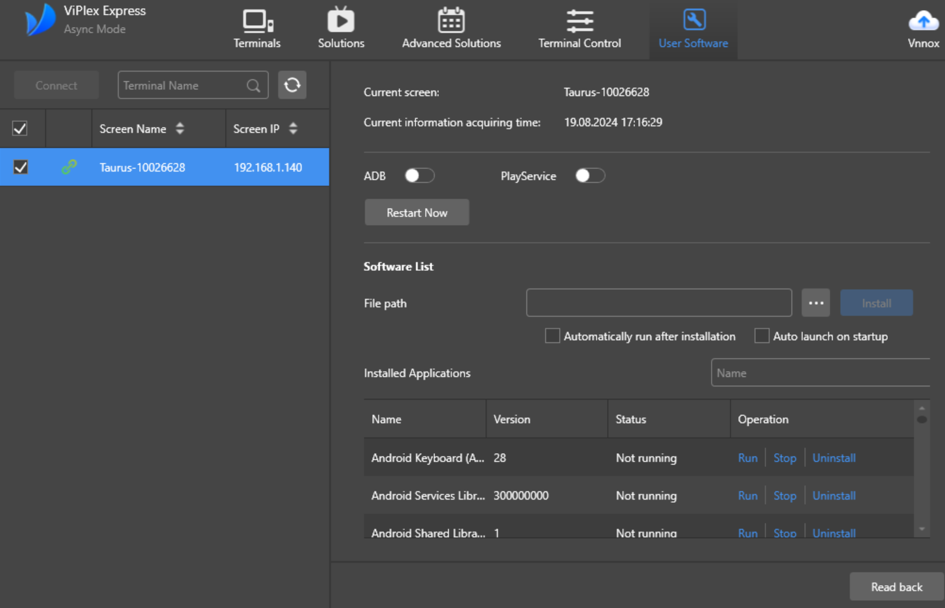
In this menu, the user needs to:
- Disable "PlayService" to turn off the internal player.
- Select and specify the path to the SmartPlayer installation file.
- Check the box for "Auto launch on startup".
- Check the box for "Automatically run after installation".
- Start the installation process.
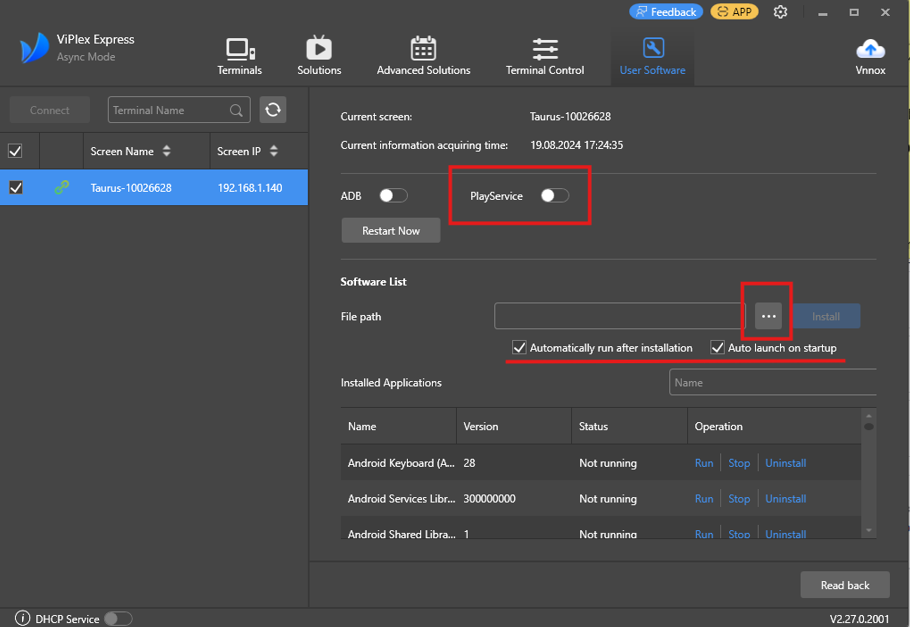
Upon successful installation, the user may see two types of notifications:
- Set successfully
- OnInstallSucess
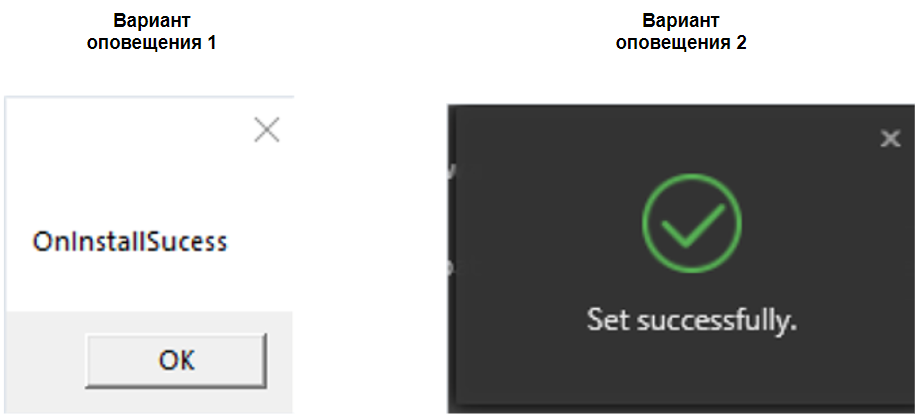
Step 2: Activating the SmartPlayer Application Using Viplex Express
To activate the SmartPlayer application on the device, the user needs to navigate to the "Terminal Control" section in the application and select the "Playback Management" block.

Step 3: Configuring Network and Time Settings on the Device Using Viplex Express
Network Configuration
To configure the network, the user needs to go to the "Terminal Control" section of the application and select the "Network configuration" block. The following types of network configuration are available:
- To configure a wired network, use the "Wired Network" section.
- To configure a wireless network, use the "Wi-Fi Network" section. To search for a network, select "Wi-Fi STA Mode" and enter the credentials to connect to the Wi-Fi network.
- To configure a mobile network, use the "Mobile Network" section.
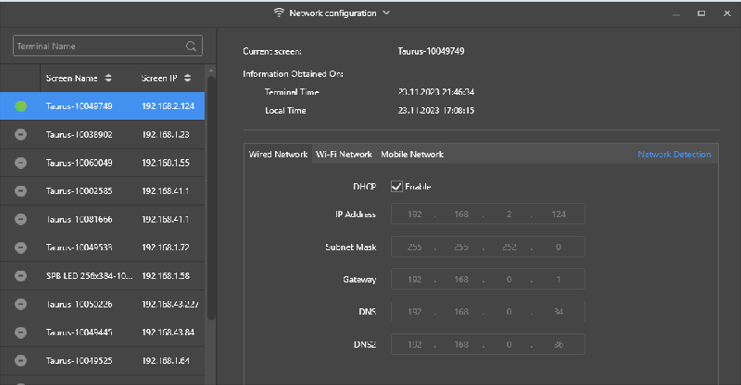
Time Configuration
The user needs to go to the "Terminal Control" section of the application and select the "Time synchronization management" block. Then, the user needs to select the appropriate device and correctly set the following parameters:
- Time zone
- Date
- Time
To confirm the changes to the above parameters, the user needs to click the "Apply" button.
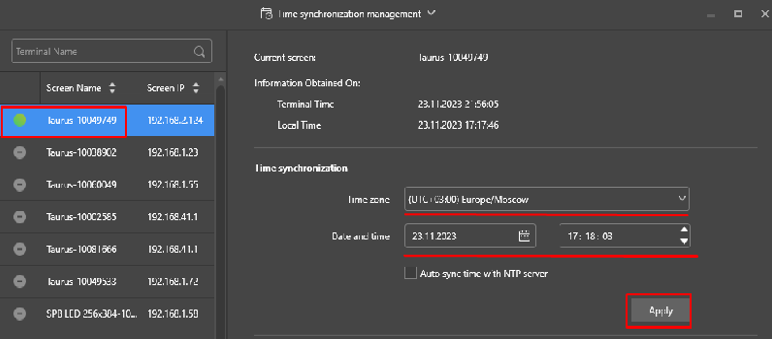
Step 4: Launching the SmartPlayer Application and Connecting via ADB
In the open Viplex application, type "Novasoft" and "Selftest" (The "User Software" and "Debug mode" sections will appear).
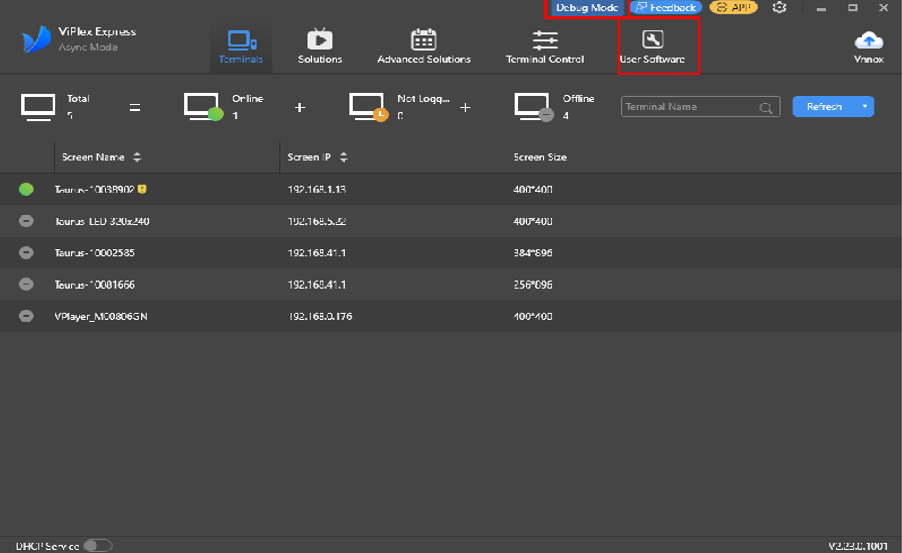
In the application, the user needs to select the "User Software" section and connect to the desired device. The next step is to enable the "ADB" setting. This is done using the switch. If the "ADB" slider is green, it means the setting is active.
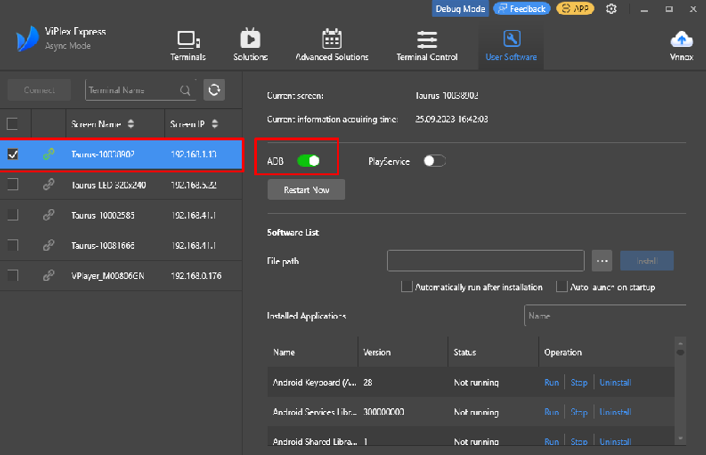
Next, the user needs to go to the "Terminals" section and right-click on the desired device. In the menu that appears, select the "debug tool" option.
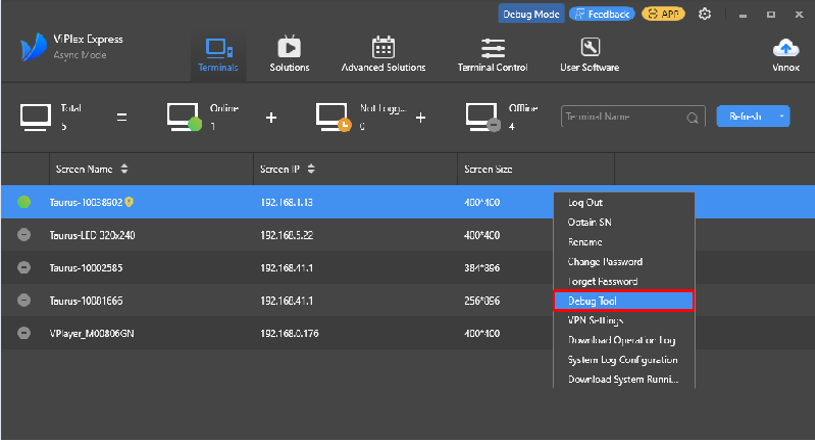
Content Restrictions for Novastar TB 30
The list of content restrictions for use on Novastar TB 30 devices includes:
- Maximum video resolution: width 960 pixels and height 750 pixels, resulting in an area of approximately 650,000 pixels. This is the upper limit for the device, and at this load, the device may lag due to other processes running on the Android OS that consume system resources.
- Maximum internal storage for content: 4 GB, with the remaining space occupied by the Android OS.
- Video parameters:
- Maximum resolution: 960 x 750, which covers approximately 650,000 pixels. It is recommended to use lower resolutions to leave resources for the Android OS to function properly.
- Recommended resolution: 208 (width) x 312 (height). These resolution parameters were used during testing.
Product Information
Product details from Novastar are available here.
Additional Information
If this article does not help in using the functionality as intended or if questions remain after reading it, you can discuss these issues in the "Discussion" section at the top of the page.
